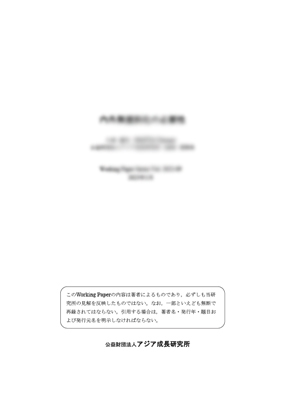Provincial Economic Growth and Industrial Structure in China:An Index Approach

| Author | Hiroshi Sakamoto |
|---|---|
| Date of Publication | 2011. 1 |
| No. | 2011-01 |
| Download | 1839KB |
Contents Introduction
This study examines the relation between provincial economic growth and industrial structure in China. To understand China’s state of and changes in industrial structure, this study suggests several indices. First, we use the state of industrial structure as an index; that is, a lower ratio reflects a higher GDP share of the primary industry and a higher ratio reflects a higher GDP share of the tertiary industry. We estimate two indices using GRP structure (GI) and labor structure (LI) for 31 provinces. Then, we use changes in industrial structure as an index; that is, we compare the differences of the share of the above-mentioned indices between categories, times, and regions. Through the results thus obtained and comparing these results with per capita GRP, the study shows several findings. First, although provincial per capita GRP is diverging during periods, both indices (GI and LI) are converging strongly. It implies that industrial structure moves toward higher-level industry (tertiary industry) in each province simultaneously. This reflects the Petty-Clark’s law (Clark, 1940; and Petty, 1690). Second, the converging speed of each index is different. The converging speed of GRP (GI) is higher than that of labor (LI). This indicates that labor structure makes slower progress than GRP structure. Third, the relation between the difference of each index and per capita GRP indicates that lower-growth provinces showed a higher gap. This indicates that the adjustment speed of industrial structure is one reason for regional disparity in China.
